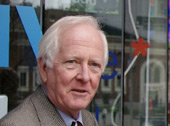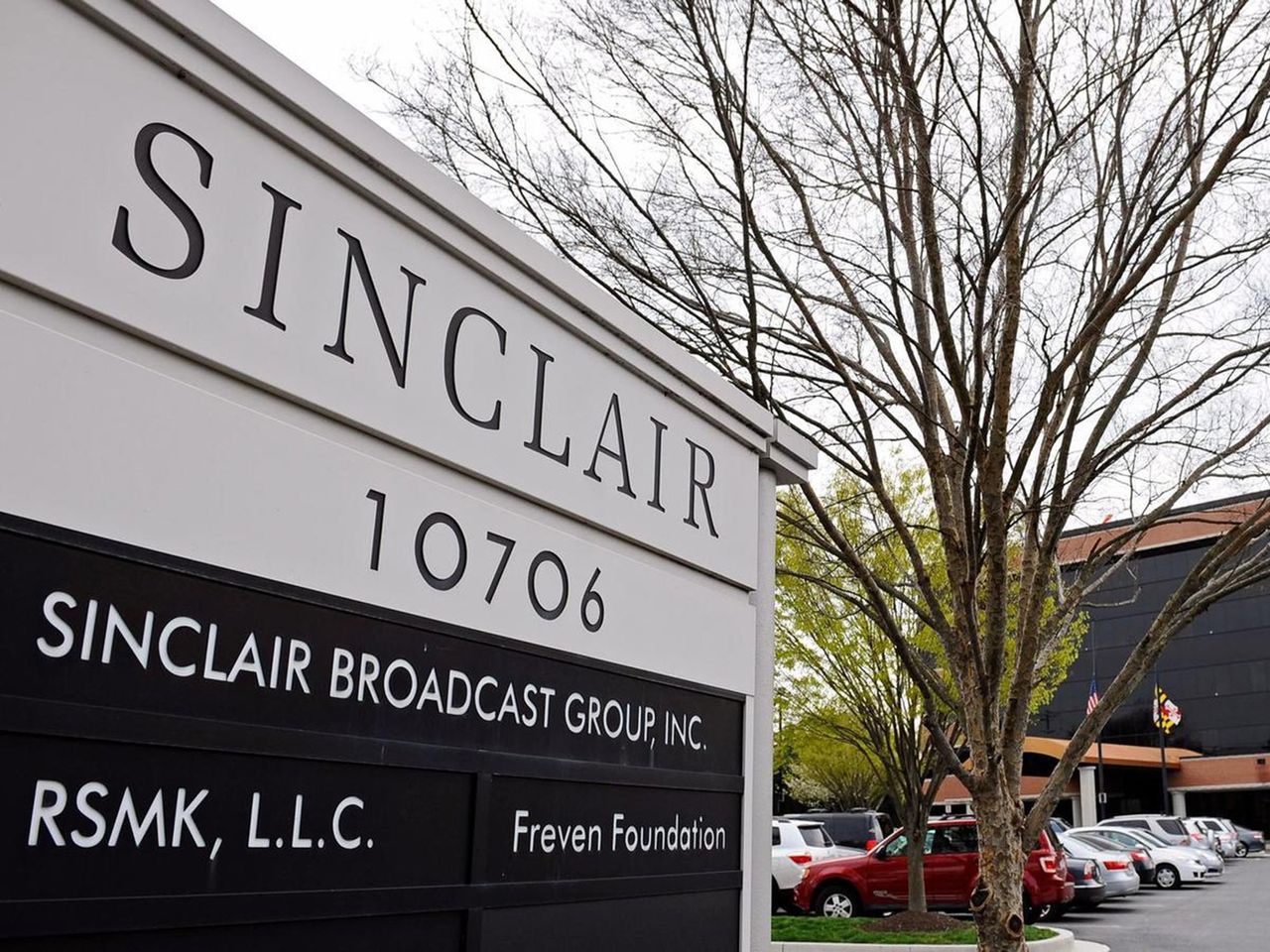Optimism Clashes With Tariff Anxieties at 2025 NAB Show
Vendors take a ‘heads-down’ approach amid an uncertain business climate
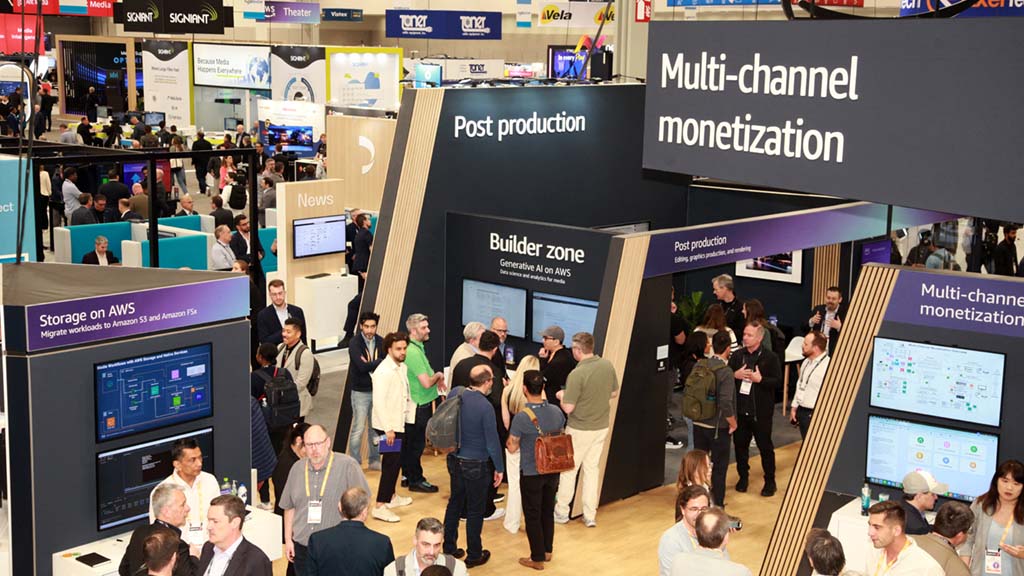
Whether you’re in the air or out for a swim, the last thing you do when you hit bone-rattling turbulence is slow down.
That was the state of mind at the 2025 NAB Show in the wake of the Trump administration’s April 2 “Liberation Day” tariff announcement. “It’s on everybody’s minds,” said one vendor CEO, speaking on background to express the widely felt anxiety. “But our customers and suppliers are all telling us the same thing: they’re staying the course with their budgeted plans until they have reason to do otherwise.”
It was anybody’s guess how long that “steady-as-you-go” attitude would guide M&E sector activity. With the sudden imposition of a 90-day delay on those “reciprocal tariffs” announced on the show’s last day—followed by conflicting messages on tech tariffs the following weekend—the heads-down focus on the business at hand was up against the head-spinning threat of a turbulence-induced global economic stall-out ahead of any resolution of the tariff questions.
As it was, the dominant goal on people’s minds heading into the annual Las Vegas gathering, April 5-9, was to mitigate the intensifying turbulence unrelated to tariffs that was at least partially responsible for a 10% drop in attendance from 61,000 in 2024 to 55,000 this year. Whether by way of regulatory relief or the potential returns on cost-saving and revenue-generating technology advancements, the need for new ways forward dominated exhibit hall and meeting room discussions.
Problem-Solving Supersedes Pure Sales Agendas
For industry suppliers, it’s no longer just a matter of selling good technology; it’s about helping customers work through the business challenges, Glodina Lostanlen, chief revenue officer at Imagine Communications, noted. “The challenge is to find the returns.

- Registered Attendees: 55,000
- Countries Represented: 160
- First-Time Attendees: 53%
- Exhibitors: ~1,100 (125 first-timers)
SOURCE: NAB
“If you look at the FAST channels and the investments made in digital set-tops, our customers—all the big brand names—are telling us, ‘We invested a lot in digital and we’re not seeing the returns,’ ” she added. “At the same time, the linear business is under pressure because of the fragmentation. We really have to help them make the most of everything they have.”
Imagine is pursuing that agenda on both the playout and monetization sides of its product portfolio. One recently implemented case in point entails how the company tailored its SureFire ad server and linear TV decisioning platform to help New Zealand’s state-owned commercial broadcaster TVNZ derive higher ad revenues from digital programmatic advertising operations utilizing the Google Ad Manager (GAM) supply-side platform.
The professional video industry's #1 source for news, trends and product and tech information. Sign up below.
Using SureFire, TVNZ can book contextually relevant ads from its linear inventory to fill empty ad breaks in digital streams. “Our SureFire solution understands the context of the linear, and it brings the linear broadcast rules into the ad decisioning,” Lostanlen explained. “So the GAM will propose several ads, and there is some intelligence with background on what the linear program is to tell GAM to pick the best ad.”
Across NAB Show exhibit halls, the pall of uncertainty was countered by an eye-popping array of cost-saving and revenue-driving vendor solutions impacting every facet of the business, from creation and production to distribution and monetization. Breakthroughs abounded on every front, many enabled by generative and other permutations of AI, which, along with machine learning, have gone from the hype-and-wonder stage to being baked-in components permeating the M&E landscape.
AI Messaging Gives Way to Touting Cloud Solutions
Indeed, despite the pervasive presence of AI, it didn’t come close to getting as much attention as it did last year. What mattered to sellers was getting across to buyers the ways their solutions were facilitating broadcasters’ shift to and use of the cloud.
If you look at the FAST channels and the investments made in digital set-tops, our customers—all the big brand names—are telling us, ‘We invested a lot in digital and we’re not seeing the returns.’ ”
Glodina Lostanlen, Imagine Communications
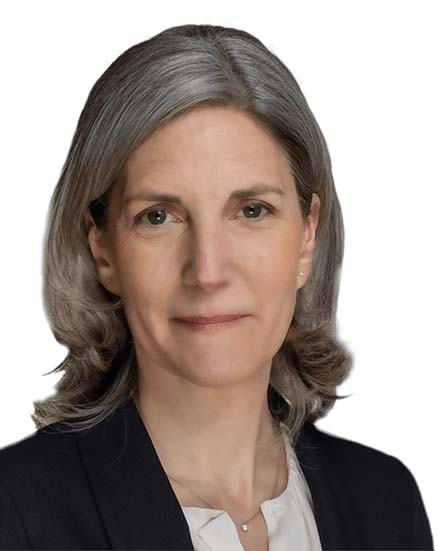
Zixi, for example, was focused on communicating the role it is playing in the cloud transition beyond supplying low-latency contribution transport. “This show is an inflection point for us,” Zixi CEO Mark Aldrich said. Citing partnerships with AWS, Amagi, Ateme, Videon, Magnifi.ai, Red5 and many other suppliers, he added, “We’re an accelerant to helping the industry move from satellite to IP in an elegant way.”
Innovations enabling scalable, reliable and secure live video delivery with 4K/HDR formatting at the lowest possible total cost of ownership have contributed to diminishing resistance to the cloud, Aldrich noted, as customers experience the benefits firsthand.
OTT Support Moves Center Stage
Telestream, too, pointed to broadcasters’ transition to IP as the industry trend with the greatest impact on product development. “We’re seeing a lot more processing in the cloud and distribution on ABR [adaptive bitrate used with OTT streaming],” said Matthew Driscoll, Telestream’s vice president of product management, in areas related to quality control in postproduction, distribution and monetization.
AI support, as heavily promoted by Telestream last year, is a given component across much of the company’s product portfolio but was barely mentioned in the firm’s NAB Show messaging this year. “AI is a big factor in automating our workflows,” Driscoll said, noting the generative AI applications complement the firm’s use of machine-learning tools over the last 15 years.
Of course, normalizing AI in workflows only means there’s much more to come. For example, what can be done with AI-enabled speech-to-text “is incredible,” Driscoll said. Stanza, Telestream’s captioning software solution, at present only supports the generation of English captions from speech spoken in other languages, but an expansion to translation across multiple languages is on the road map.
As for new developments unrelated to AI, Driscoll pointed to several advances impacting the firm’s PRISM waveform monitors, SPG9000 sync pulse and test signal generators and iQ Intelligent Video Management System, all of which are facilitating use of SMPTE 2110 and the transition to HDR in mainstream production. For example, the SPG9000 sync pulse support for 2110 and SDI in one box has been enhanced with added redundancy, supporting automatic switchover to secondary timing resources when a primary source like the Global Navigation Satellite System malfunctions.
Advances impacting PRISM include color banding that ensures conversions from HDR to SDR don’t end up with major chromatic distortions. The iQ enhancements involved expedited troubleshooting through the centralized ARGUS live A/V, captioning and SCTE 35 ad-marker monitoring system.
Real-Time Multilingual Captioning
Many solutions in the multilingual captioning domain—much of it enabled by AI—were on display at the show. They included significant advances brought to light by ENCO, which exhibited a product line impacting automated broadcast and production workflows involving automated live translation, virtual production, audio compliance, playout, cloud-based web streaming and more.
“We’re lucky to have been playing in a lot of different markets since our inception, which gives us the ability to see how different markets capitalize on the same technologies,” ENCO Product Design and Solutions Manager Bill Bennett said. “For example, we’re able to see how generative AI used in writing advertising copy can be used to convert text to synthetic speech.”
Having introduced on-premises language translation from English to Spanish text last year, at this year’s NAB Show ENCO extended its enTranslate platform’s capabilities to support translating dozens of languages in real time, on-prem or in the cloud. The company also demonstrated a new version of its enTranslate mobile app, letting visitors who scanned QR codes on display in multiple locations view text translations of the on-stage commentary in seven different languages.
Now, ENCO is applying its R&D skills to turning those translations into audio output in real time, Bennett said. “We’re using the same processing-intensive GPU hardware acceleration we’re employing to perform the text translations for the AI re-speaking conversion to audio,” he noted.
NextGen TV Developments
Discussion among broadcasters rolling out ATSC 3.0 was dominated by current moves to get the Federal Communications Commission to set a date certain to sunset 1.0 by the end of the decade. The momentum towards this goal was best illustrated less than a week after the show ended, when the FCC issued a request for public comment on a 1.0 sunset proposal submitted by NAB earlier this year.
The Advanced Television Systems Committee booth in the West Hall had a more international theme after last year’s announcement that Brazil had adopted the physical layer standard of 3.0, ATSC President Madeleine Noland said.
“Our booth was a hub of energy and excitement, boasting a 30% increase in visitors over last year and showcasing the broad and growing support for ATSC 3.0,” she told members in her post-show memo. “It was also notable that Brazilians attended the show in force, as the second-most represented country at the show after the U.S. With the initial launch of DTV+, largely based on ATSC 3.0, scheduled soon for Rio [de Janeiro], excitement about the possibilities in Brazil continues to expand.”
In addition to new consumer products on display at the ATSC booth, tech demos revolved around advanced features including immersive TV and an increased emphasis on gaming.
Executives from the nation’s largest station groups also discussed the details behind the launch of EdgeBeam, a new 3.0 datacasting service, while technical discussions about using 3.0 signals as a backup to GPS (aka Broadcasting Positioning System, or “BPS”) took place during the four-day Broadcast Engineering and IT Conference.
As broadcasters move live production to the cloud, they’re discovering new ways to use streaming technology to address cost and monetization challenges. One groundbreaking development with major implications for maximizing streaming flexibility was quietly displayed by Dolby, one of many vendors offering ultra-low latency streaming solutions at NAB Show.
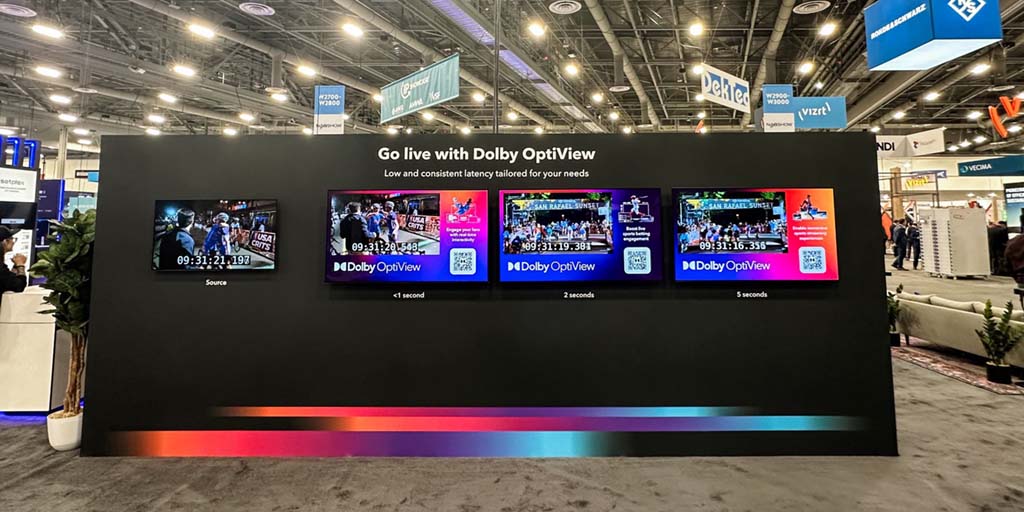
For the first time anywhere, Dolby was demonstrating how it is now possible through its OptiView platform to implement streaming at whatever level of latency and directional flexibility is required for any given live distribution scenario through point-and-click commands on a management dashboard.
“Dolby OptiView is a fully managed service that supports interactive streaming over WebRTC at sub-half-second latencies, High Efficiency Streaming Protocol (HESP) at 1 to 2 seconds or conventional HLS platforms at higher latencies,” Dolby Senior Product Marketing Manager Rose Power said.
In all cases, streams are managed through the OptiView Player software, which uses APIs that work with any browser or client software used by the chosen transport protocol. The managed service assigns streaming operations to the appropriate CDN infrastructure, including an Oracle Cloud Infrastructure network optimized for WebRTC and HTTP-based CDNs for HESP and HLS. Power said OptiView users can activate Dolby’s Server-Guided Ad Insertion (SGAI) technology to enable targeted full- or partial-screen ad placements in line with performance parameters of the chosen streaming technology.
Clearly, judging by everything on display at this year’s NAB Show, broadcasters entering the NextGen TV era have all they need to leave the limitations of the old OTA environment behind, with one exception: They need to see uncertainty giving way to coherency in U.S. trade policy.
Fred Dawson, principal of the consulting firm Dawson Communications, has headed ventures tracking the technologies and trends shaping the evolution of electronic media and communications for over three decades. Prior to moving to full-time pursuit of his consulting business, Dawson served as CEO and editor of ScreenPlays Magazine, the trade publication he founded and ran from 2005 until it ceased publishing in 2021. At various points in his career he also served as vice president of editorial at Virgo Publishing, editorial director at Cahners, editor of Cablevision Magazine, and publisher of premium executive newsletters, including the Cable-Telco Report, the DBS Report, and Broadband Commerce & Technology.
